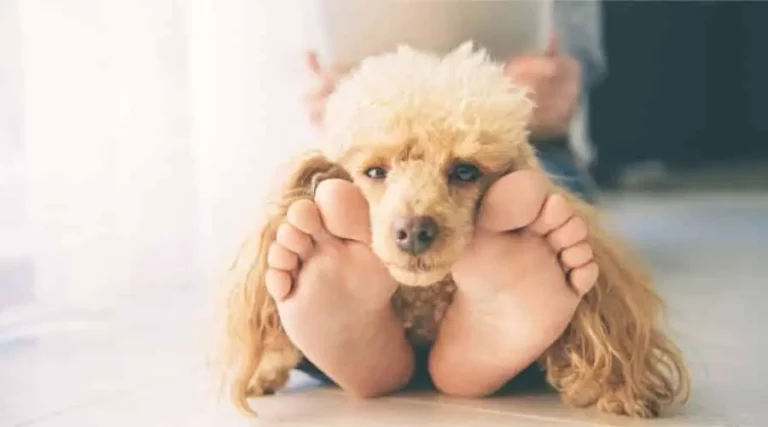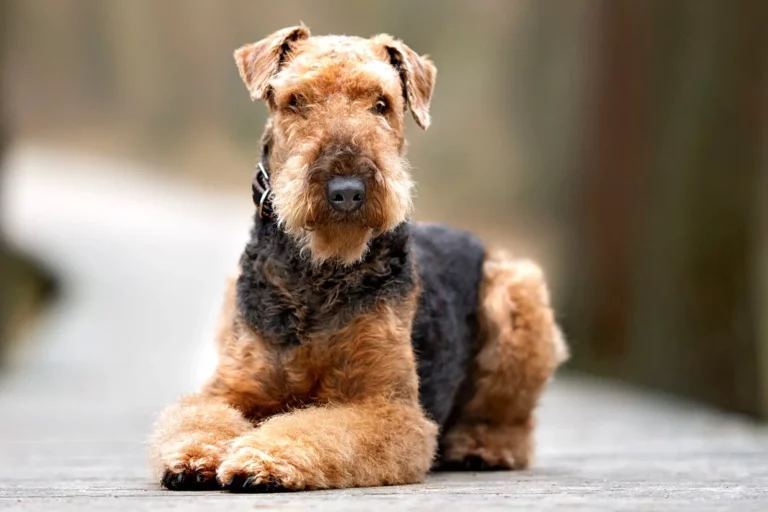Why Does My Dog Sit Behind Me and Snuggle? (15 Reason and More)
I’m sure you’ve noticed your dog sitting near, or sometimes even behind, you. While it might seem like a strange behavior to some, there are actually several common explanations for why dogs prefer to sit behind their owners.
It’s important to note that every dog is unique and the reasons for their behavior may vary. It’s always a good idea to observe your dog’s behavior and consult with a veterinarian or professional dog trainer if you have any concerns.
Key takeaways
Snuggling behind owners signifies bonding, comfort, and security.
Pack instincts encourage closeness for safety.
Sitting behind and snuggling demonstrates dog’s affection.
This behavior can also show a dog’s need for warmth.
Respecting dog’s space, even during closeness, prevents discomfort.
Why does my dog sit behind me and snuggle?
Your dog(s) may sit behind you for a variety of reasons. It’s also possible that the dog has learned that it gets rewards (e.g., pets, treats, etc.) when it sits behind you, so it continues to do so. It’s also possible that the dog is simply comfortable in that spot and chooses to be there.
Additionally, some dogs may prefer to sit in a location where they can observe their surroundings and keep an eye on potential threats. This could be learned behavior as well as genetic trait.
What is my dog thinking?
Snuggling up behind you provides your dog with a sense of safety and comfort. It’s a sign of trust and affection, indicating they feel secure when close to you.
Here are 15 other possible reasons why your dog sits behind you:
1) Protection and security
Dogs may sit behind their owners as a way of seeking protection and security. This behavior is often seen in dogs that are shy or nervous.
In canine terms, sitting behind the owner typically means that the dog is in a protective and comfortable environment. Dogs naturally feel safer when they are near their owners or people they trust, so by sitting behind them, they are signaling that they trust them to protect them.
Additionally, being outside of direct eye contact lets the dog stay more relaxed without feeling intimidated or overwhelmed by their owners’ presence.
2) Dominance and pack hierarchy
Dogs are social animals and have an inherent desire to belong in a family pack. This means that they take comfort in having someone in a leadership role, often the owner, who can provide them with feelings of security.
When dogs sit behind their owners, it shows that they view them as their leader and trust them to protect them from potential danger. It also is an indication that the dog feels secure and safe when they are around their owners.
Dogs form hierarchical relationships within their pack, with the owner typically taking the place of the alpha. By sitting behind their owners, dogs are showing that they recognize and respect the owner’s position in the hierarchy.
This behavior is usually seen in younger or less confident dogs who look to their owner for guidance and protection. This can foster a strong bond between dog and owner, as it signals trust and respect from the dog towards their caretaker.
3) Sign of respect or submission
This behavior could also be a sign of respect or submission to their owner.
4) Insecurity:
This behavior could also be a sign that the dog feels insecure.
5) Affection and bonding
Sitting behind their owners is a way for dogs to show affection and bond with them.
6) Feeling safe and secure
One of the most common reasons why dogs love sitting behind their owners is for a sense of security and comfort. When a pup sits behind its owner, it is providing itself with an extra layer of protection from potential predators.
Sitting in this position also makes them feel secure, since they can see any potential dangers coming in front of them and know that the person that provides them love and care is right next to them. This can provide both the dog and owner with feelings of stability and safety.
7) Conserving heat
Sitting behind their owners may be a way for dogs to conserve heat and share warmth.
8) Training and obedience
If your dog has been trained to sit behind you, they may be following commands or responding to a certain cue.
9) Comfort and familiarity
Your dog may find comfort and familiarity in being close to you and your scent.
10) Familiar scent
They may like the familiar scent of their owner.
11) Attention seeking
Your dog may be sitting behind you in order to get your attention or to be close to you.
12) Fear of unfamiliar environment
In unfamiliar environment, they may seek comfort from the familiar presence of their owner.
13) Trust
When a dog sits behind its owner it is sign of deep trust the dog has.
14) Watchful
Dogs may sit behind their owners in order to keep a watchful eye on their surroundings.
15) Comforting
Dogs may find comfort in being in close proximity to their owners.
Why does my dog stand directly behind me?
There could be several reasons why your dog stands directly behind you. One possibility is that they are following their natural instincts to protect and guard their pack members.
By standing directly behind you, they may be trying to protect you and keep an eye on what’s going on around you.
Additionally, your dog may want to be close to you and be following your lead, as they are very social animals and like to be with their humans.
Also, it could be that your dog sees you as a leader or a figure of authority and standing behind you is a way for them to show submission and respect. It could be also that your dog is highly trained, and it is a behavior taught, it could be a sign that the dog is waiting for command from you.
Another possibility is that your dog is simply seeking attention or affection from you. By standing behind you, they may be trying to get you to notice them and give them some love and affection.
Why does my dog sit back-to-back with me?
Dogs sit back-to-back with their owners as a way of showing affection and bonding with them. It is a nonverbal way for them to express that they feel comfortable and secure in the presence of their owner, and that they trust and love them.
Additionally, sitting back-to-back may be a way for dogs to conserve heat and share warmth with their owners. This behavior can also be sign of deep trust, affection and comfort to be in a close proximity with the other dog or human.
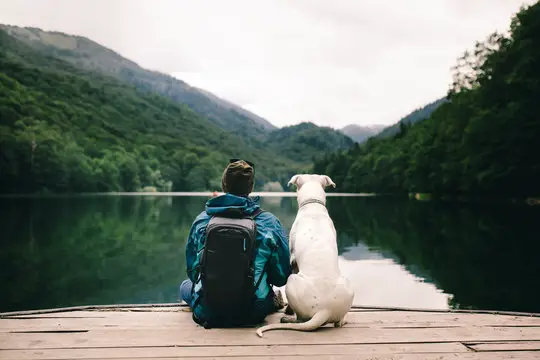
Why does my dog sit behind my legs?
Dogs may sit behind their owner’s legs as a way of seeking protection and security. This behavior is often seen in dogs that are shy or nervous, as it allows them to feel partially hidden and less exposed to potential threats.
It may also indicate that the dog perceives the owner as a leader or protector and feels safer when near them.
Additionally, this behavior could also be a sign that the dog feels insecure, or it could be a sign of respect or submission to their owner.
It’s good idea to observe other behaviors or habits of your dog to see if this is a sign of anxiety or insecurity or just regular habit. But it is also important to note that every dog is different, and their behaviors and habits are unique to them.
If you have any concerns about your dog’s behavior, it’s always a good idea to consult with a veterinarian or a professional dog trainer.
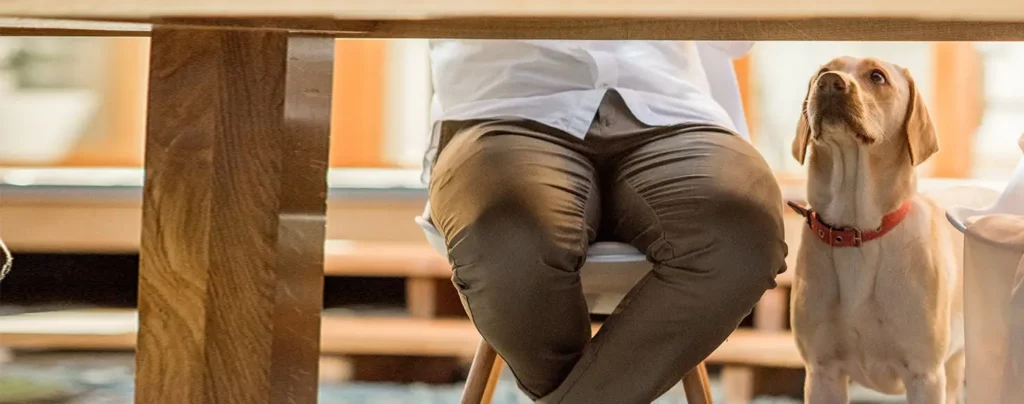
5 Handy Tips for Dealing with a Sitting Dog Behind You
If you need/want help handling a sit-happy pooch, here are 5 tips that will have you managing your pup like a pro in no time! Stop worrying and learn how to manage when your dog sits behind you.
1. Remain Calm and Speak Softly.
It’s important to remain calm and speak in a calm, soothing tone whenever your pup is lounging behind you. Speaking in a raised or excited voice can only encourage the behavior and make it worse. Gently say “no” if they are being disruptive and pat them on the head or back to remind them that they need to stay in their designated spot.
2. Offer Attention and a Reward for Good Behavior
When your pup is sitting obediently behind you, reward them with some love and attention! Offer a pat on the head, tell them they are good, and even offer a treat if they’ve been especially well-behaved. This will reinforce that the behavior has been successful and encourages more positive behavior in the future.
3. Use Positive Reinforcement Techniques
Positive reinforcement techniques are an excellent way to get your pup’s attention when they’re sitting behind you. Praise them, offer treats or a favorite toy, and let them know what a good job they have done. This will make it more likely that they’ll choose to sit behind you again in the future!
4. Ignore Barking, Whining and Growling
If your pup starts barking, whining or growling don’t respond. These are behaviors that can be used to manipulate you and should be ignored in favor of praising positive behavior. Simply wait for them to settle down and then give them a treat or approach with a toy if they have behaved appropriately.
5. Be Patient with Training – It Takes Time!
Training your pup to stop sitting behind you isn’t something that’s going to happen overnight. In fact, it’ll take some patience, consistency, and lots of practice for your pup to understand the behavior you’re looking for. Start by rewarding when they are in a different location than you, preferably near enough to keep an eye on them but close enough so they don’t bark. Gradually move further away each time until they offer appropriate behavior even when not in view.
Final remark!
When your dog chooses to sit behind you and snuggle, it’s primarily a demonstration of their affection and trust in you as their owner. It’s a behavior rooted in their pack instincts and serves as a means for them to seek comfort, warmth, and security.
However, even as your dog seeks closeness, it’s crucial to respect their space and ensure they are comfortable. Remember, a secure and content dog is a happy dog, and their happiness is a testament to your bond with them.
I hope you found this article helpful and informative.
Please leave a comment, question and/or any feedback you might have below.
Thanks for reading!

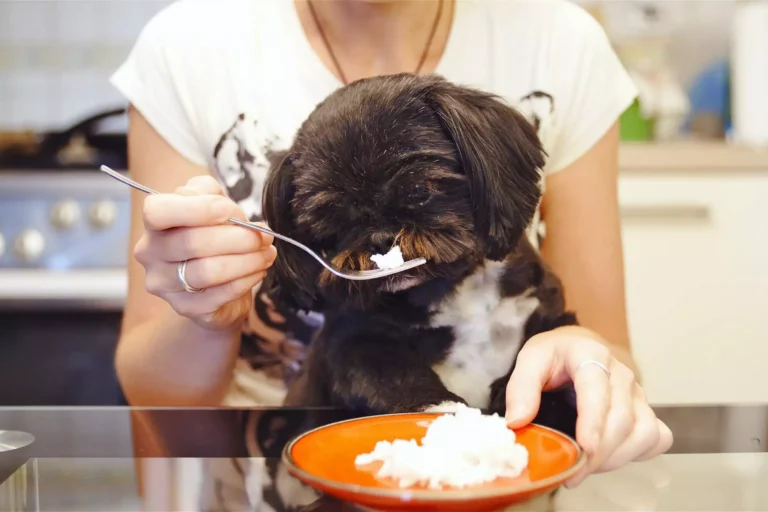
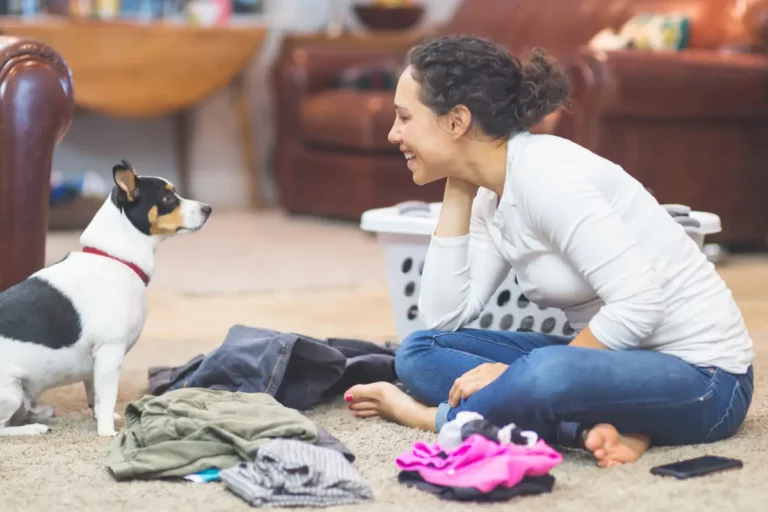
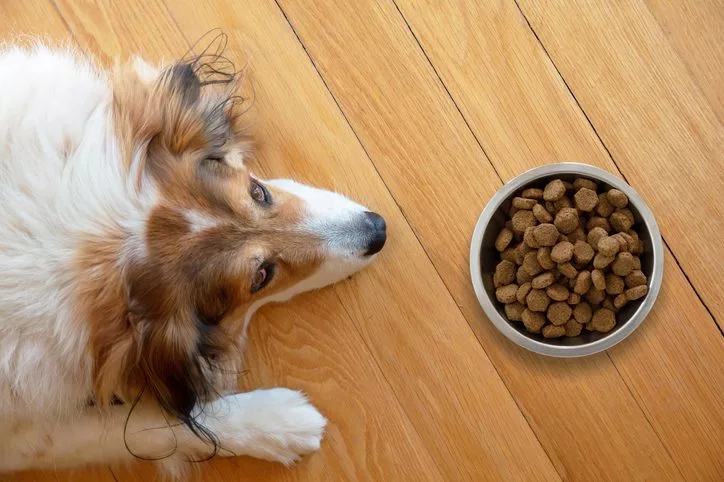
![Poisoning in Dogs Symptoms [5 Signs Your Dog Has Poisoning]](https://www.warmlypet.com/wp-content/uploads/2022/12/poisoning-in-dogs-symptoms-768x512.webp)
